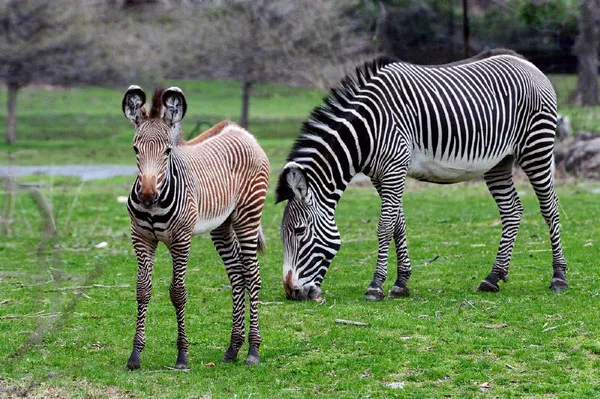The zebra, with its striking black-and-white stripes and graceful movements, is more than just a visually captivating animal. It holds significant symbolic and spiritual meanings across various cultures and contexts. This article explores the symbolism of the zebra, including its spiritual meaning, interpretations in different countries, color symbolism, significance in dreams, and the myths and legends surrounding this unique creature.
Zebra Spiritual Meaning
The zebra’s distinctive appearance and behavior lend it a rich array of spiritual meanings and symbolic representations. In spiritual contexts, the zebra often embodies themes of balance, individuality, and communication.
Balance and Duality
The zebra’s black-and-white stripes are a powerful symbol of balance and duality. The contrasting colors represent the harmony between opposing forces, such as light and dark, good and evil, or order and chaos. Spiritually, the zebra encourages individuals to seek balance in their lives, to integrate different aspects of themselves, and to recognize the importance of both light and shadow. The zebra’s stripes remind us that balance is essential for a harmonious and fulfilling life, and that embracing both sides of our nature can lead to greater self-understanding and growth.
Individuality and Uniqueness
Each zebra’s stripe pattern is unique, much like human fingerprints. This uniqueness symbolizes individuality and the importance of embracing one’s personal identity. Spiritually, the zebra represents the value of being true to oneself and celebrating personal differences. It encourages individuals to recognize and appreciate their unique qualities and to stand confidently in their authenticity. The zebra’s distinctiveness serves as a reminder that everyone has their own path and purpose, and that our individuality contributes to the richness of the world.
Communication and Social Connection
Zebras are highly social animals, living in herds and maintaining complex social structures. They communicate through vocalizations, body language, and even the patterns of their stripes. Spiritually, the zebra symbolizes effective communication and the importance of social bonds. It encourages individuals to cultivate meaningful connections with others, to express themselves clearly, and to value the role of community and collaboration in their lives. The zebra’s social nature highlights the significance of interpersonal relationships and the support that comes from being part of a group.
Adaptability and Resilience
The zebra’s ability to adapt to various environments and challenges symbolizes resilience and adaptability. In spiritual terms, the zebra represents the capacity to navigate life’s changes with grace and flexibility. It encourages individuals to embrace new situations, to adjust their approaches as needed, and to remain resilient in the face of adversity. The zebra’s adaptability serves as a reminder that change is a natural part of life and that maintaining a positive and flexible attitude can lead to personal growth and success.
See Also: 45 Zebra Quotes, Sayings, and Proverbs
Zebra Symbolism (In Different Countries)
The zebra’s symbolism can vary across different cultures and countries, reflecting diverse interpretations of its attributes and significance.
Africa
In Africa, the zebra is often seen as a symbol of balance and harmony due to its distinctive black-and-white stripes. It is also associated with tribal and cultural traditions, representing unity and community. In some African cultures, the zebra is considered a messenger or guide, helping individuals navigate challenges and find their path. The zebra’s presence in African folklore and art highlights its role as a symbol of balance, strength, and cultural identity.
Australia
In Australia, the zebra is less prevalent in indigenous culture but is sometimes associated with the concept of balance and uniqueness due to its striking appearance. Australian symbolism often focuses on the zebra’s role in representing individuality and the celebration of differences. The zebra’s distinctive stripes are seen as a reminder of the importance of embracing one’s uniqueness and standing out in a diverse world.
North America
In North America, the zebra is not native but is often used in symbolism related to balance and diversity. The zebra’s black-and-white stripes represent the integration of contrasting elements, and it is sometimes used as a symbol of unity in diversity. In various contexts, the zebra is seen as an emblem of how different aspects of life can come together to create harmony and understanding.
Europe
In European cultures, the zebra is often viewed through the lens of exoticism and uniqueness. It represents a sense of wonder and fascination with the natural world. The zebra’s symbolism in Europe may focus on its distinctive appearance and the idea of standing out in a crowd. It is also associated with themes of individuality and personal expression, reflecting the diverse and eclectic nature of European cultural influences.
Zebra Symbolism (With Different Colors)
The zebra’s color patterns—primarily black and white—carry different symbolic meanings, and variations in color can add further layers of interpretation.
Black and White
The classic black-and-white stripes of the zebra symbolize duality, balance, and harmony. The contrast between the colors represents the integration of opposites and the importance of equilibrium in life. Spiritually, this color pattern emphasizes the need to embrace both light and shadow, to find balance between contrasting elements, and to appreciate the harmony that arises from integrating different aspects of the self.
Gray
In some interpretations, a gray zebra, or a zebra with a more muted color scheme, may symbolize neutrality and compromise. Gray represents the middle ground between black and white, suggesting a focus on finding balance and avoiding extremes. It can also indicate a period of transition or adjustment, where flexibility and adaptability are key. The gray zebra’s symbolism encourages individuals to navigate changes with an open mind and to seek harmonious solutions.
Brown
A zebra with brown or reddish hues, although not common, may symbolize grounding and connection to the earth. Brown represents stability, practicality, and a connection to one’s roots. The presence of brown in a zebra’s color scheme could indicate a need to stay grounded and to focus on practical matters. It also reflects the importance of integrating one’s unique qualities with a sense of stability and groundedness.
Blue
While blue is not a natural color for zebras, its inclusion in symbolic interpretations can represent clarity, calm, and communication. Blue symbolizes tranquility and effective expression. A blue zebra, in a symbolic context, might suggest a focus on clear communication, emotional calm, and the importance of expressing oneself authentically. It encourages individuals to seek clarity and to foster peaceful and harmonious relationships.
Zebra Symbolize in Dreams
Dreams featuring zebras can carry a range of symbolic meanings, offering insights into various aspects of the dreamer’s life and psyche.
Balance and Harmony
Dreaming of a zebra often symbolizes a need for balance and harmony in one’s life. The zebra’s black-and-white stripes represent the integration of opposing forces, and seeing a zebra in a dream may indicate that the dreamer is seeking equilibrium or facing challenges related to balance. The dream may suggest the need to address conflicting aspects of life and to strive for a more harmonious and balanced existence.
Individuality and Self-Acceptance
A zebra appearing in a dream may symbolize themes of individuality and self-acceptance. The unique stripe pattern of the zebra represents personal uniqueness and the importance of embracing one’s true self. The dream may be encouraging the dreamer to recognize and celebrate their individuality, to stand confidently in their authenticity, and to value their unique qualities.
Communication and Social Dynamics
Zebras are social animals with complex communication systems, and dreaming of a zebra may relate to themes of communication and social interaction. The dream could indicate a need to improve communication skills, to address social dynamics, or to strengthen relationships with others. It may also suggest the importance of expressing oneself clearly and fostering meaningful connections.
Adaptability and Change
The zebra’s adaptability to different environments and situations can symbolize the dreamer’s ability to navigate change. A dream featuring a zebra may indicate that the dreamer is facing or will face changes and challenges that require flexibility and resilience. The dream encourages the dreamer to embrace adaptability, to remain open to new experiences, and to approach changes with a positive and flexible mindset.
Exploration and Curiosity
Zebras are often associated with exploration and curiosity due to their unique appearance and behavior. Dreaming of a zebra may suggest a desire for exploration, a need to explore new opportunities, or a curiosity about different aspects of life. The dream may be encouraging the dreamer to embark on new adventures, to explore their interests, and to embrace a sense of curiosity and wonder.
The Myths and Legends About Zebra
The zebra’s unique appearance and behavior have inspired various myths and legends throughout history. These stories reflect the cultural significance and symbolic meanings attributed to the zebra.
African Folklore
In African folklore, zebras are often associated with creation myths and stories of the natural world. One popular legend tells of how the zebra’s stripes were created. According to the myth, zebras were originally all white, but they were painted with stripes by a god or spirit to symbolize balance and harmony. The stripes were said to represent the blending of different elements and the importance of maintaining equilibrium in the world.
Aboriginal Australian Stories
In Aboriginal Australian stories, animals like zebras are often depicted with unique qualities and roles. While zebras are not native to Australia, they may appear in Aboriginal art and stories as symbols of balance and harmony. The zebra’s distinctive stripes are seen as a representation of the connection between the earthly and spiritual realms, symbolizing the integration of different forces and the importance of maintaining harmony in life.
Mythological Symbols
In some mythological traditions, the zebra is seen as a symbol of transformation and duality. Its black-and-white stripes represent the merging of opposites and the balance between different aspects of existence. In these myths, the zebra may be portrayed as a guide or messenger, helping individuals navigate the complexities of life and find harmony between conflicting forces.
Modern Interpretations
In modern interpretations, the zebra is often seen as a symbol of diversity and individuality. Its unique appearance and social behavior make it a powerful emblem of personal expression and the celebration of differences. In contemporary culture, the zebra is used as a symbol of uniqueness and the importance of embracing one’s identity in a diverse world.
Conclusion
The zebra, with its striking black-and-white stripes and graceful movements, holds profound symbolic and spiritual meanings across various cultures and contexts. From representing balance and individuality to symbolizing effective communication and adaptability, the zebra offers valuable insights into the themes of harmony, self-acceptance, and resilience. Its presence in dreams and myths highlights its role as a symbol of transformation and connection, serving as a reminder of the importance of embracing both light and shadow in our lives. As a powerful symbol of unity and diversity, the zebra encourages us to celebrate our unique qualities, to seek balance in our lives, and to navigate the challenges of life with grace and authenticity.
Related topics:













